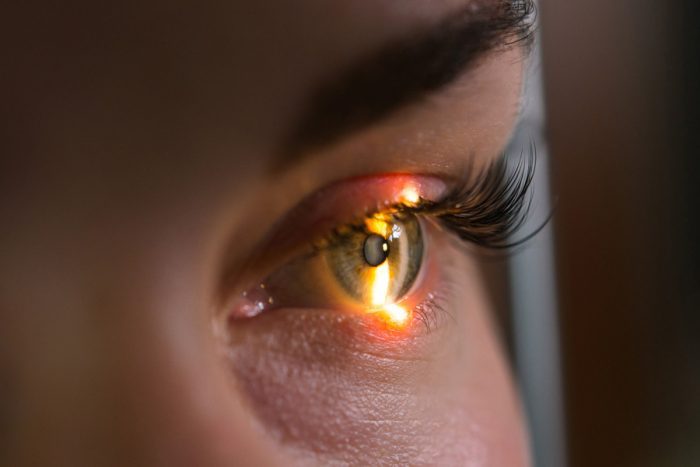
A cataract is a clouding of the eye’s naturally clear lens. The lens focuses light rays on the retina (the layer of light-sensing cells lining the back of the eye) to produce a sharp image of what is being viewed. When the lens becomes cloudy, light rays cannot pass through it easily and vision is blurred.
Cataract development is a normal process of aging, but cataracts can also develop from eye injuries, certain diseases, medications or long-term exposure to sunlight. A person’s individual genetic history may also play a role in cataract development.
In some instances of slight vision-blurring, a cataract may not require treatment beyond a change in a person’s eyeglasses prescription. However, these steps may only temporarily improve vision. Unfortunately, preventative steps such as medications, eye drops, exercises or glasses will not eliminate existing cataracts or prevent cataract-formation.
Surgery is the only way to remove a cataract. When cataracts inhibit vision to the point that it restricts everyday activities, surgery should be considered. During cataract surgery, the cloudy lens is removed from the eye through a surgical incision and in most cases, the natural lens is replaced with a permanent intraocular lens (IOL) implant.
Before surgery
To determine if your cataract(s) should be removed, your ophthalmologist (Eye MD) will perform a thorough eye examination, including measuring your eye to determine to proper power of the intraocular lens that will be inserted in your eye. You should also ask your ophthalmologist if you should continue taking your current medications before surgery, and you should make arrangements to have someone drive you home after surgery.
The day of surgery
Surgery is usually done on an outpatient basis, either in a hospital or an ambulatory surgery center. For the day of surgery, you may be asked to skip breakfast, depending on your time of surgery.
When you arrive for surgery, you will be given eye drops and perhaps a mild sedative to help make you comfortable. A local anesthetic will numb your eye, the skin around your eye will be thoroughly cleansed and sterile coverings will be placed around your head. You may see light and movement during the procedure, but you will not be able to see the surgery while it is happening.
Under an operating microscope, a small incision is made in the patient’s eye. In most cataract surgeries, tiny surgical instruments are used to break apart and remove the cloudy lens from the eye. The back membrane of the lens (called the posterior capsule) is usually left in place. A plastic, acrylic or silicone intraocular lens is implanted in the eye to replace the natural lens that was removed.
After surgery is completed, your doctor may place a shield over your eye. Following a short stay in the outpatient recovery area, you will be ready to go home.
Following surgery
There are several important post-surgical steps for patients to follow:
Lasers are not used in cataract removal surgery. However, the lens capsule (the part of the eye that holds the lens in place) sometimes becomes cloudy several months or years after the original cataract operation. If the cloudy capsule blurs your vision, your ophthalmologist can perform a second procedure called a posterior capsulotomy. The posterior capsulotomy procedure uses a laser to make an opening in the cloudy lens capsule, restoring normal vision.
The success rate of cataract surgery is excellent: improved vision is achieved in the majority of patients if other vision problems are not present.
Though they rarely occur, possible serious complications of cataract surgery are:
Call your ophthalmologist immediately if you have any of the following symptoms after surgery:
Even if cataract surgery is successful, some patients may not see as well as they would like to. Other eye problems such as macular degeneration (aging of the retina), glaucoma or diabetic retinopathy may limit vision after surgery.